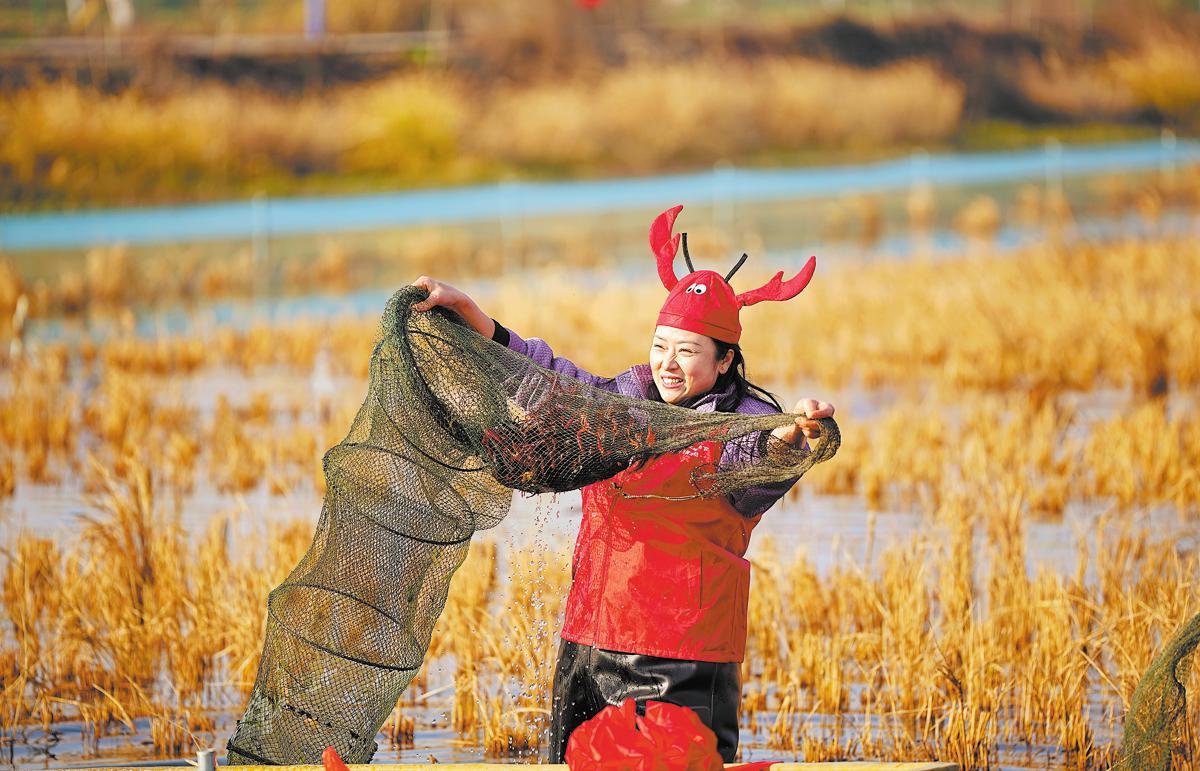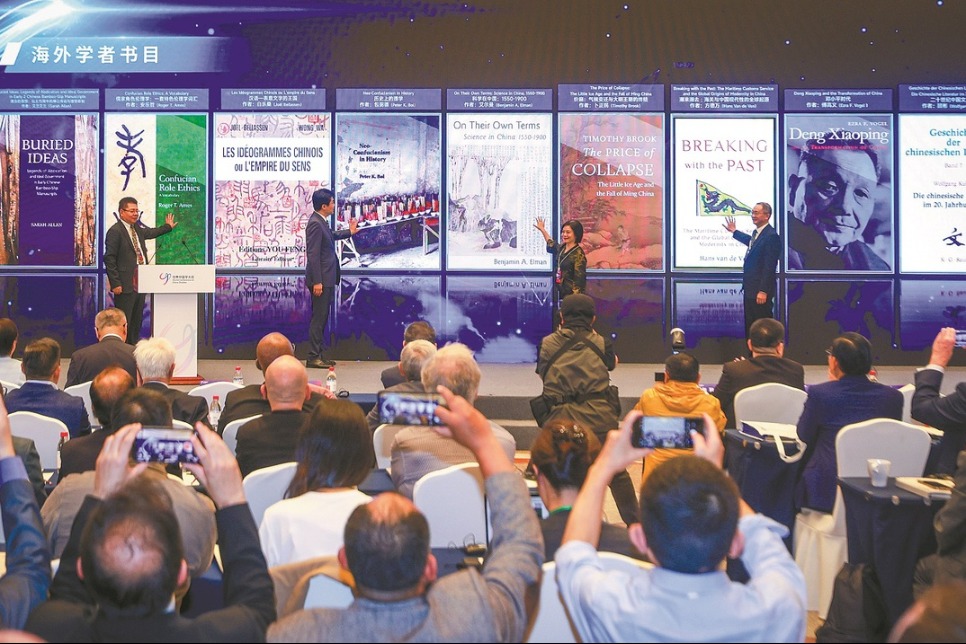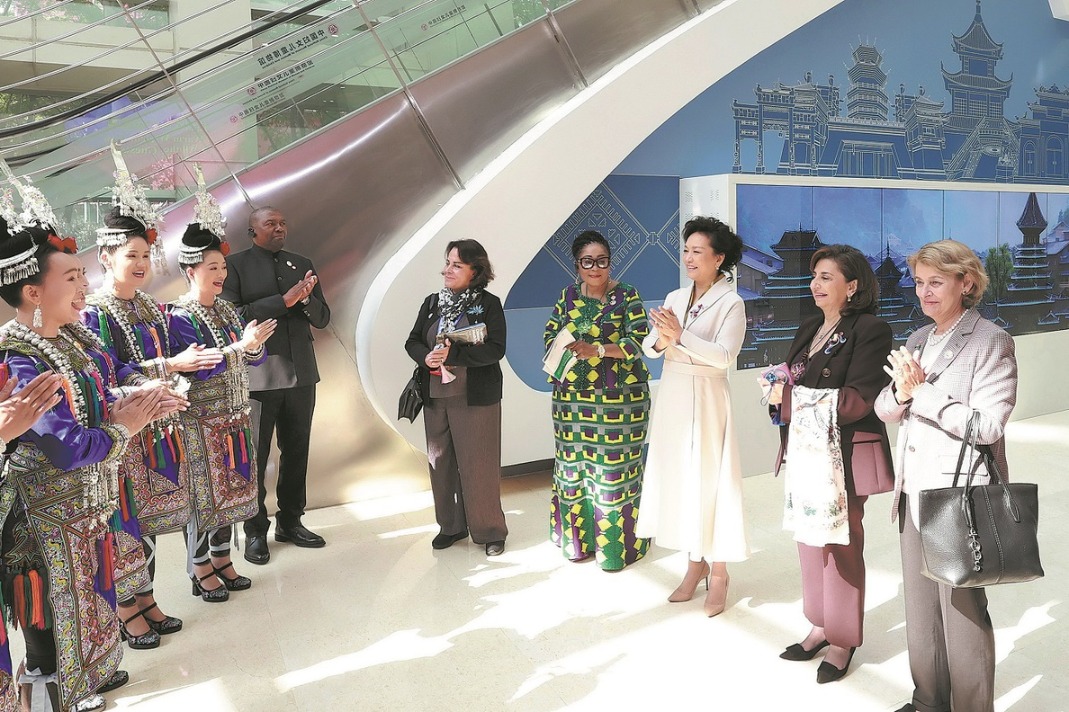Farmers diversify field work to double rewards
Side-by-side cultivation of rice and crayfish creates sustainable, profitable model


Local farmers have greatly benefited. "Ten years ago, I could earn maybe 7,500 yuan ($1,054) per hectare from rice," said Chen Liang, a farmer who tends 7.7 hectares in the Houhu Management Zone in Qianjiang.
"Now, with rice and crayfish together, I make at least 30,000 yuan per hectare and earn an annual income of 300,000 yuan," Chen said.
As a result of the higher income, Chen's family bought a car, renovated their house and started taking vacations nearby. "We used to work all year in the fields, rain or shine," he said.
"Now, the busiest time is just a month or so during crayfish season. With mechanization, the rest is manageable and life has more balance."
Apart from higher income, the model reduces agricultural inputs and brings environmental benefits. "We barely use fertilizers or pesticides," he said.
The model reduces pesticide use by at least 50 percent and insecticide use by 70 percent, local authorities said.
Liu Ping, director of the local ecology and environment bureau, said agriculture is a major source of water pollution in China, with nationwide fertilizer use efficiency hovering around just 40 percent.
"Normally, 55 to 60 percent of water pollutants come from farming," he said. But in Qianjiang, the rice-crayfish model has had no negative impact on the water and even, to some extent, realizes the recyclable use of water, he added.
























